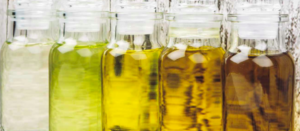A front-page topic that of counterfeit extra virgin olive oil and, let’s face it, it’s not difficult to understand why.
The marketing of Italian EVO oil is the basis of a considerable turnover and this, unfortunately, brings to the light serious problems with which we find ourselves living with on a daily basis and which make the life of the consumers, especially the most attentive, stressful and problematic.
It is for this exact reason that we have decided to include in our Bonamini Blog an article entirely dedicated to oil counterfeiting, suggesting however some precautions so as to make all of you more aware and easily avoid the frauds that can be encountered.
Let’s start by saying that, unfortunately, extra virgin olive oil, due to its composition, it is easily alterable and this also means that such manipulation is one of the most difficult to discover, unless the product is subjected to more in-depth examinations.
But let’s start step by step so that, at the end of reading this article on counterfeit olive oil, you can have a solid foundation from which to start to try to avert, in your own small way, the curse that afflicts the Italian olive oil market, which in the last decade has grown by 87.5% (according to the Italian Olive Oil Consortium Unaprol).
The first scam concerns mixing: as you can easily imagine, in this particular case there is a small part of actual EVO oil, but to it more oils are added such as oils of lower quality, such as seed oils or deodorized and deacidified waste oils. The latters, precisely because of the chemical processes to which they have been subjected, have a pale, almost transparent color and therefore, to give them the appearance of a real extra virgin olive oil and the typical bright green color of an high quality EVO oil, colorant is added (usually chlorophyll).

On the subject of oil fraud, we cannot help but mention a problem that, for the Italian sector, is one of the biggest: foreign markets. In fact, extra virgin olive oils are increasingly being marketed as “Italian” but which in reality have only been bottled in Italy, with olives from other parts of Europe or North Africa: which cannot be compared in terms of quality with Italian olives but which, at the same cost, are much cheaper.
After discussing some of the possible counterfeits of extra virgin olive oil at the production level, we would like to point out that there are just as many from a chemical/health point of view.
Let’s look at them together below:
• Adulteration: the composition of EVO oil is modified using qualitatively poor substances, thus detrimental to the health of the final consumer
• Alteration: the organoleptic changes of extra virgin olive oil can be traced back to degeneration processes, perhaps due to prolonged or incorrect storage.
• Sophistication: adding chemical substances to the olive oil itself, to improve its color or extend its shelf life
To the production and chemical frauds are added also commercial frauds such as for example episodes of falsification, when a less valuable oil is sold as extra virgin or counterfeit, when an oil is attributed characteristics or worse, certified origin/production marks, which it does not possess.
Unfortunately, many olive oil frauds can only be traced through specific chemical analyses, such as checking the acidity, which must not exceed 0.8%, and counting the number of peroxides or through ultraviolet spectrometry and an analysis of sterols, capable of tracing the characteristics of individual species of olives so that the veracity of the declared olives is actually confirmed or not.
Or through sensory analyses, carried out by a panel of expert, trained and certified tasters, capable of detecting any defects that could escape the final consumer; who has only one thing to do to avoid running into a counterfeit olive oil: read the label carefully.
The must-haves to look for when reading the label of a quality extra virgin olive oil are:
1. Sales name of the product (virgin or EVO)
2. Origin of the olives
3. Type of production (in the case of extra virgin olive oil, the wording must state “obtained through mechanical pressing processes”)
4. Nutritional and chemical values
5. Shelf life
For European extra virgin olive oils, the batch of origin of the product is also indicated on the label, i.e. the harvest campaign – important information for the choice and selection of a freshly harvested and produced olive oils.
It is also important to pay maximum attention if you are looking for a certified EVO oil; organic olive oil must indicate on the label the use of olives grown without the use of chemical fertilizers or herbicides, while PDO extra virgin olive oil must bear the brand that certifies the link of that EVO to a specific territory, enhancing the quality of the product of that specific territory, in our case the PDO Veneto Valpolicella.
Obtaining these trademarkes requires very careful chemical and sensorial analysis of the quality of the oil and therefore certifies a decidedly superior quality.
How can you be sure that you have purchased a pure extra virgin, without counterfeits and scams?
To defend yourself from the jungle that the consumer encounters every time he approaches the purchase of an extra virgin olive oil, we recommend first of all having a good knowledge of the product, so that he can read the label carefully and confirm or not the first alarm bells; and then remember that relying on small producers and trusting them, especially those with certified quality, remains the best and safest choice, thanks above all to the fact that the entire production chain of the oil is black on white, clear and traceable.
Of course, the cost will certainly be higher, but it will also be repaid by the quality of the EVO oil itself which, from all points of view, turns out to be the true protagonist of our daily diet.